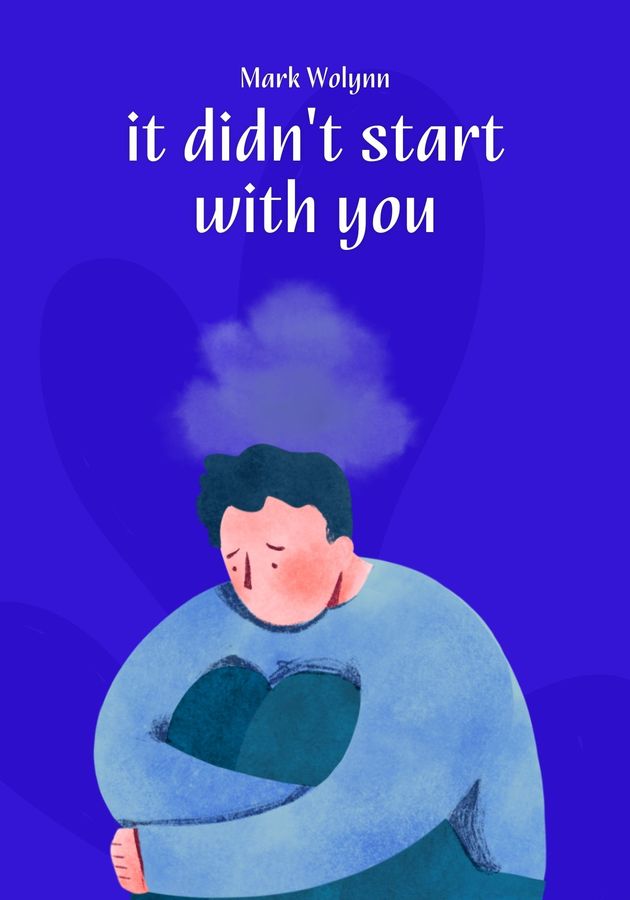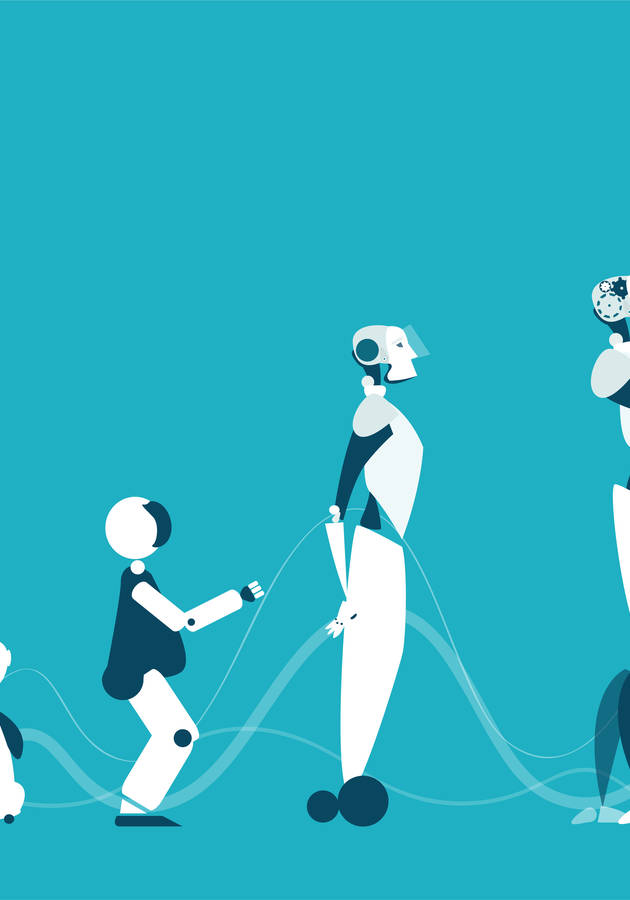Early on in Paul Thomas Anderson’s superb 1999 movie “Magnolia,” game show host Jimmy Gator (played by Philip Baker Hall) mutters, “And the book says: 'We may be through with the past, but the past ain't through with us.’” The quote, repeated several times throughout the movie, is actually a nod to William Faulkner’s part-novel part-play “Requiem for a Nun,” where one character says to another the now-famous words, “The past is never dead; it’s not even past.” In a few words, that’s the main premise of “It Didn’t Start With You” by Mark Wolynn, a groundbreaking study of inherited trauma. So, get ready to discover why a lot of your pain is not really yours, and prepare to acquire a few tools to relieve yourself from the related torture!
The corporeal anatomy of psychological traumas
To understand Wolynn’s approach to inherited and early developmental family trauma – the so-called “core language approach” – it’s necessary to understand the relation between traumas, words and the unconscious first. Let us start with the first of the three. In Ancient Greek, “trauma” means “wound,” and in fact medical professionals use the same word to describe both physical injuries and psychological scars. In our case, we’re only interested in the latter. Broadly defined, a psychological trauma is a type of damage to the psyche that occurs as a result of a severely distressing event. Notice the use of the word “damage” in that sentence. It’s not a metaphor. Namely, contrary to common wisdom, psychological traumas can cause real, tangible harm in the brain. How so? Allow us to explain.
All psychological traumas originate from stress, which, as you know full well, is a physiological response to an unpleasant stimulus. The stress hormones are pretty much the same ones that trigger your body’s “fight, flight or freeze” response. Their job is to increase your heart and breathing rates and to tense up the muscles in your limbs. To do so, they make your liver release extra sugar, they tighten your blood vessels, and hijack most of the energy your digestive and reproductive systems use. There’s no point in being able to eat properly or have sex with someone when you are attacked by a saber-toothed tiger, now, is there? You’ll think about the fine things in life when the danger passes. After all, the stress hormones are activated only in crisis mode. And crises are rare. Or, rather, they should be.
You see, the stress response was designed to protect you in the case of a short-term emergency by preparing you to react quickly. When the emergency passes, a stress hormone called cortisol helps the body relax and return to normal. And that’s precisely what happens, say, in zebras: the very second they get to safety, their bodies go back to normal. Humans aren’t like that. We get stressed out not only by real tigers, but by imagined ones as well. Our brains are so powerful that they can trigger the stress response by merely thinking about a danger, long after it has passed. The problem is that prolonged exposures to the stress hormones can cause many physiological dysfunctions. In some cases, they can also cause – for lack of a better phrase – brain scars.
Trauma, language, and the unconscious
When something scary or painful happens to you, your brain tries to process it to the best of its capabilities. Its main objective is to turn it into something you can understand, something you will either accept or, at least, be comfortable enough to live with. However, if the scary or painful thing has caused an overwhelming stress to your body – or repeatedly causes it – your brain will try to protect your wellbeing by disguising, obscuring or even blacking-out the related memory. This is the reason why many survivors of severe trauma can’t remember what happened to them. Simply put, their brain won’t allow them. In an attempt to protect them, it fragments the original memory into isolated images and body sensations and puts them all away in a place where it’d be difficult to find them. That place is your unconscious.
The reason why it’s difficult to retrieve memories from the unconscious is because the unconscious lies far from the reach of everyday words. That brings us to another well-documented feature of traumas: the inability to articulate them. Even though language and memory have historically been studied apart, over the past several decades, a growing body of evidence has revealed that they are actually heavily intertwined. Case in point, when people with post-traumatic stress disorder (PTSD) are faced with trauma-related words, they tend to have slower response times, regardless of whether they can remember their traumas or not consciously. Put otherwise, there’s some part of them which knows that these trauma-related words have more emotional content than other words. And that part is the unconscious.
When you are willfully trying to remember something from your past, just by translating it into words, you’re altering it to suit your most immediate purpose. It’s because your conscious brain, via language, acts as a filter between your actual memories and your capability to articulate them. However, some stimuli – most particularly, smells, sounds, and words – are capable of bypassing your conscious brain and transporting you immediately into your past, even when you don’t know that might be happening. Here’s an example. Say, you’ve fallen off your bike when you were five years old near a restaurant serving sausages. To shield you away from the pain and shame, your conscious brain has smashed the original memory into smithereens and piled it away in the unconscious in the form of disparate images and sensations. However, even today, you can’t stand the smell of sausages. You don’t know why, but you just do.
Traumas lost and found
Sigmund Freud was the first person to realize that, unconsciously, we may find ourselves reacting to certain people, events, or situations in old, familiar ways that echo the past we’ve all but forgotten. He called this phenomenon “repetition compulsion,” but today it is much better known under the sharper name “traumatic reenactment.” As defined by Wolynn, it is “an attempt of the unconscious to replay what’s unresolved, so we can get it right.” Freud’s contemporary Carl Jung believed that only once we get it right – that is to say, only once we embrace our shadow – can we truly do away with it. In Wolynn’s opinion, our unconscious drive to relive past events is probably the mechanism at work which compels individuals to repeat their family’s unresolved traumas across generations. These types of traumas are called inherited traumas.
Quite recently, a Dutch psychiatrist by the name of Bessel van der Kolk discovered that during traumatic events, the speech center in the brain shuts down, as does the part of the brain responsible for experiencing the present. Hence, in Van der Kolk’s words, “When people relive their traumatic experiences, they have trouble thinking and speaking. They no longer are capable of communicating to either themselves or to others what’s going on.” Still, as we already explained, precisely what the conscious brain can’t tell you is what your unconscious brain knows in depth. Recent research has shown that your unconscious brain may even remember things you’ve never experienced. For example, as neuroscientist Rachel Yehuda discovered, children of Holocaust survivors who had PTSD are born with low cortisol levels, predisposing them to a life of fragility and reenactment of the horrors of the previous generations. Now, how could that be?
Well, first of all, you must realize that it’s not just genes that make us – we are also made by our environments, our values, our memories, our thoughts and beliefs. An emerging field of science known as epigenetics has shown that the link between all of these may go far deeper than we’ve ever thought. Epigenetics – which literally means “on top of genetics” – is the study of how genes are influenced by the environment. In the past few years, it has revealed that some of these changes are heritable, that is to say, that we are born biologically adjusted to the environment our parents experienced. Even without changing the sequence of the DNA, chemical exposures in the womb – called epigenetic tags – can trigger beneficial modifications in gene expression. Unfortunately, it seems that cells have memory of negative events as well.
An example of intergenerational trauma
In his 1962 autobiographical work “Memories, Dreams, Reflections,” Carl Gustav Jung wrote, “I feel very strongly that I am under the influence of things or questions which were left incomplete and unanswered by my parents and grandparents and more distant ancestors. It often seems as if there were an impersonal karma within a family, which is passed on from parents to children. It has always seemed to me that I had to complete, or perhaps continue, things which previous ages had left unfinished.” Wolynn feels the same. “Intergenerational trauma is a real phenomenon,” he writes. “What I’ve learned from my own experience, training, and clinical practice is that the answer to our problem may not lie within our own story as much as in the stories of our parents, grandparents, and even our great-grandparents.”
Take for example Jesse. Once a star baseball player and a straight-A student, when he came to talk to Wolynn for the first time he looked ten years older than his age. Due to persistent insomnia and accompanying headaches, he was at the end of his rope, having already forfeited his baseball scholarship and dropped out of college. Neither a sleep clinic nor three doctors and two psychologists had managed to help him. He didn’t have any idea what had triggered his insomnia. He just knew that one night, just after his 19th birthday, he woke suddenly at 3:30 a.m., overwhelmed by the feeling that if he went back to sleep, he’d never wake up again. Ever since, insomnia had become a nightly ordeal for Jesse. He would wake up regularly during the night, freezing, shivering and seized by the fear that something awful might happen to him.
It took several sessions for Wolynn to realize that the root of the problem didn’t lie with Jesse, but with his father’s older brother Colin. Namely, when Colin was only 19 years, he died in a blizzard, having lost consciousness from hypothermia while checking power lines in the Northwest Territories of Canada. Now, in the words of Wolynn, “three decades later, Jesse was unconsciously reliving aspects of Colin’s death – specifically, the terror of letting go into unconsciousness. For Colin, letting go meant death. For Jesse, falling asleep must have felt the same.” Hence, the insomnia, hence the shaking. It wasn’t the symptoms that helped Wolynn make the connection. Rather, it was the words Jesse used to describe them during the sessions: “cold,” “freezing,” “asleep,” “nineteen.” And therein lies the catch, the essence of Wolynn’s trademarked “core language approach” to healing inherited trauma.
The four unconscious themes
When fragments of past traumas play out inside us – even such that might not have happened to us – they leave some kind of clues behind, most perceptibly in the form of bodily sensations or emotionally charged words and sentences. Wolynn calls these clues “core language.” In the case of Jesse, his nonverbal core language consisted of waking up at 3:30 a.m., shivering from cold and being terrified of falling back to sleep. Verbally, Jesse couldn’t help but describe these sensations using words and sentences that recalled the last moments of his uncle’s life. His death was such a tragic loss for Jesse’s parents that they had vowed to never mention his name again. Precisely because of this, Colin had reappeared in Jesse’s unconscious, struggling to break down the door to consciousness, insisting to be heard, hoping for some kind of resolution.
In the words of Jung, “When an inner situation is not made conscious, it happens outside – as fate.” That’s why it’s important to verbalize traumas using what Wolynn calls a Core Language Map. Translating fears and anxieties into words means bringing old traumas – whether personal or intergenerational – into consciousness, and that’s where real recovery begins. Producing a core language map is essentially a four-step process, which encompasses identifying the following four things: the core complaint, the core descriptors, the core sentence and the core trauma. We’ll get to each of them in a second. For now, let’s just say why it’s important to identify them. The answer to that question lies in something Wolynn calls “the unconscious themes.”
These are, essentially, the ways your unconscious has experienced and interpreted your relationship with your parents. There are four unconscious themes. You may have unconsciously merged with a parent, rejected a parent, experienced a break in the early bond with your mother, or identified with a member of your family system other than your parents. “Any one of these themes can hinder our ability to flourish and to achieve the goals we set,” writes Wolynn. “They can limit our vitality, our health, and our success. They show up in our behavior and in our relationships. Most importantly, they appear in our words.” And that’s where we’re heading next or, rather, getting back to – the core language map.
The core language map
The four unconscious themes are gateways into your childhood traumas, and thereby, they are also gateways into yourself. As in our example with the bike accident, these themes can be triggered involuntarily, by smells, sights, or sounds. The best – if not the only – voluntary way to trigger them is through words or more precisely, by way of designing a Core Language Map. As we already remarked, it consists of four sequential parts. Here they are:
- The core complaint. The core complaint is the first stopping point along this verbal path to recovery from trauma because it’s the easiest one to recognize. Most people do share their core complaints with others. In the case of Jesse, such a complaint was, “I can’t sleep. Something is preventing me from falling asleep. Something saying, If I go back to sleep, I might never wake up.” As you can see, the core complaint is always linked to the symptom: in this case, Jesse’s sleeplessness.
- The core descriptors. The core descriptors are “spontaneous, off-the-cuff adjectives and phrases” which can reveal feelings about our parents that we might not even be aware we hold. They appear as patterns whenever we try to describe our mothers and fathers, as we remember them from our childhood years. Try that. Say how they were but also write what you blame her for. Don’t think. The goal is to be spontaneous so as “to bypass the adult-rationalized, refined version of your childhood story.”
- The core sentence. The core sentence is a sentence that captures your worst fear in a few words. You know it. It is the sentence that deepens your despair every time it appears in a thought. To identify it clearly, just complete the following sentence: “My worst fear, the worst thing that could happen to me, is…” Edit out the nice and extra parts. That’s it – that’s your core sentence. Most probably, it will begin with an “I” or a “They” and will be emotionally charged and dramatic. Almost certainly, it will cause a physical reaction when spoken. And unlike the complaint, it will target the cause, not the symptoms. In the words of Wolynn, “If the core language map is a tool for locating buried treasure, the core sentence is the diamond you find when you get there.”
- The core trauma. There are two ways to bridge the gap between the core sentence and your core trauma. One is through a genogram, that is to say, a diagram of a family tree which includes all known family traumas. The other one, the one Wolynn recommends, is through a bridging question. A bridging question is pretty much your core sentence with a question mark. Say, if your worst fear is that you might “harm a child,” your bridging question should be “Who in my family might have hurt a child or might have blamed themselves for not keeping a child safe?” Ask enough people this, and you will probably come to a conclusion not unlike Jesse’s: that your worst fear, your deepest pain isn’t actually yours.
Once Jesse discovered the root cause of his insomnia, he began talking to his dead uncle with the help of Wolynn. A few sessions later, he could tell him, through tears, the words that set him free, “From now on, Uncle Colin, you’ll live on in my heart – not in my sleeplessness.” Just by saying this to his uncle – the uncle he never knew he had – Jesse began to calm. In time, he began sleeping again. His life returned to normal. He was liberated from the ghost of his uncle and thereby of his own trauma.
Final notes
As of 2021, intergenerational trauma is an under-researched phenomenon. Indeed, Mark Wolynn is one of the pioneers in the field, making “It Didn’t Start With You” one of the best introductions to the subject. Most importantly, the book doesn’t merely combine effectively theoretical explanations with real-world case studies – it also offers a powerful tool for recovery: the core language approach. In the words of Tara Brach, “a wise and trustworthy guide on the journey toward healing.”
12min tip
Ghosts who refuse to rest in their graves until their stories are a staple of folk culture and horror movies everywhere. It now seems that they may be just an embodiment of an interesting phenomenon: intergenerational, inherited trauma. Unless you verbalize it, it will never leave you.





























